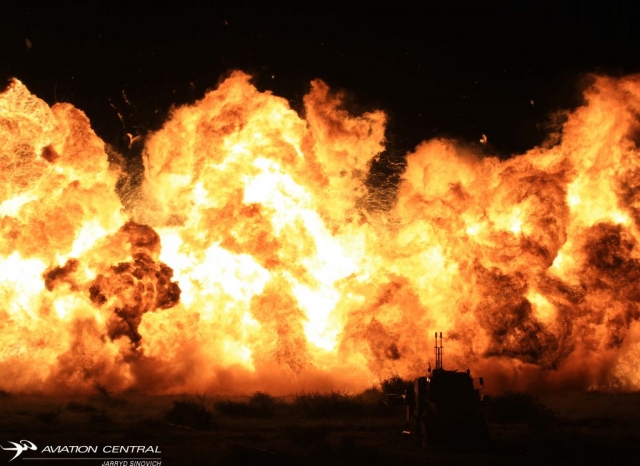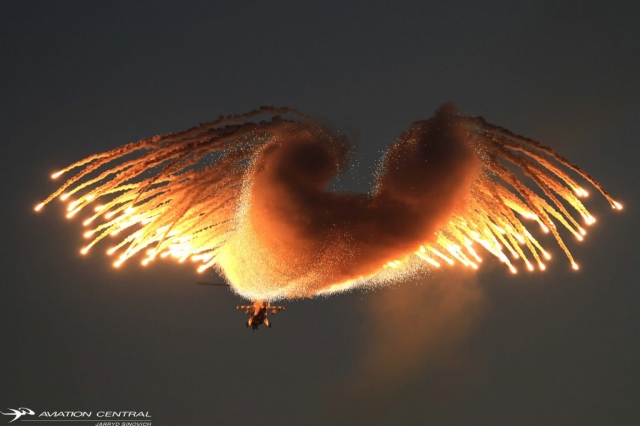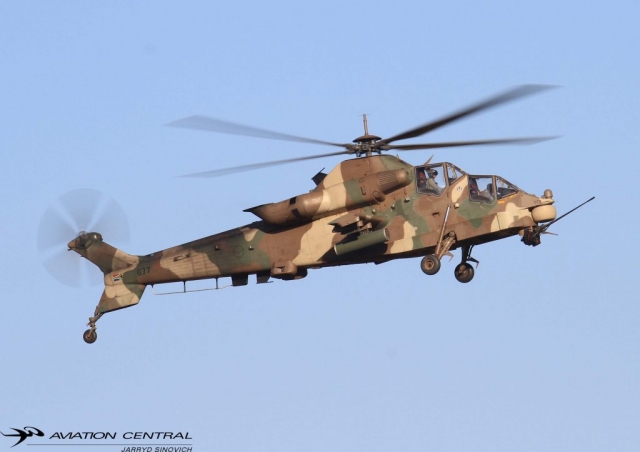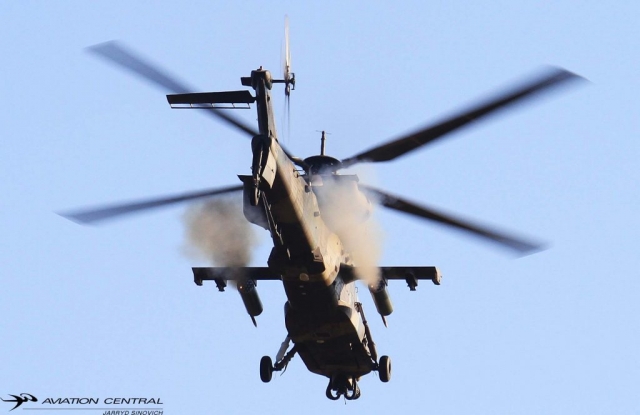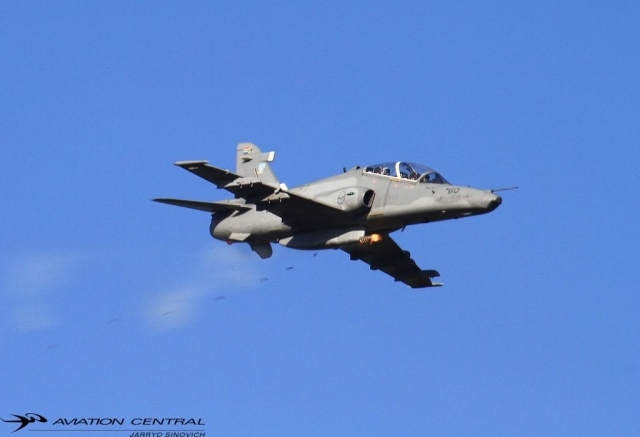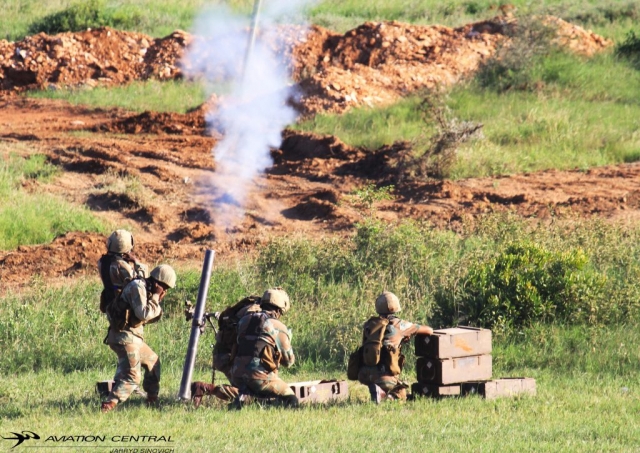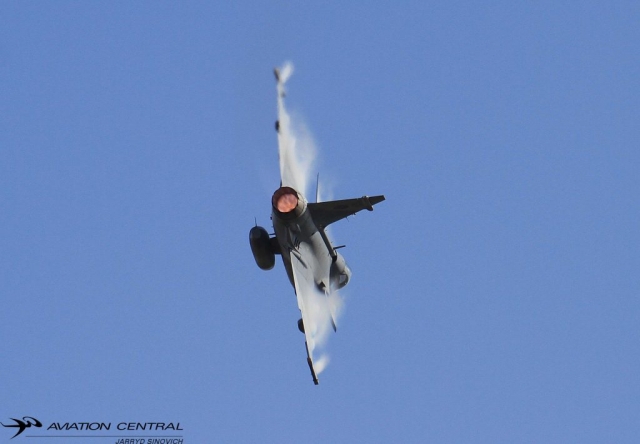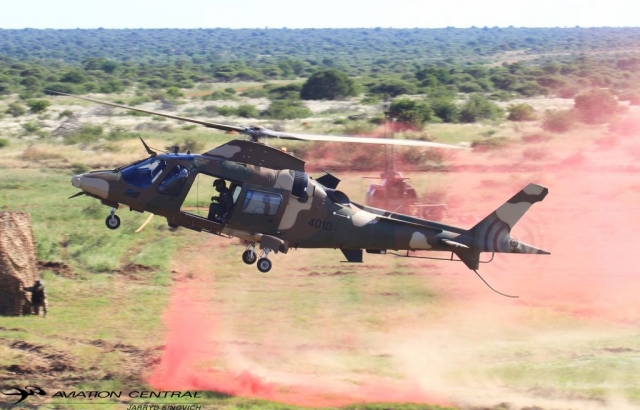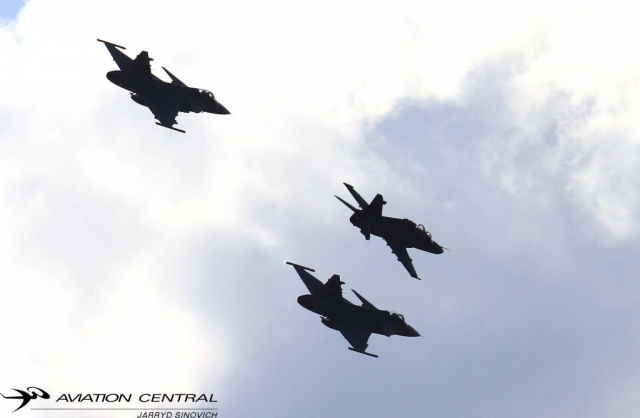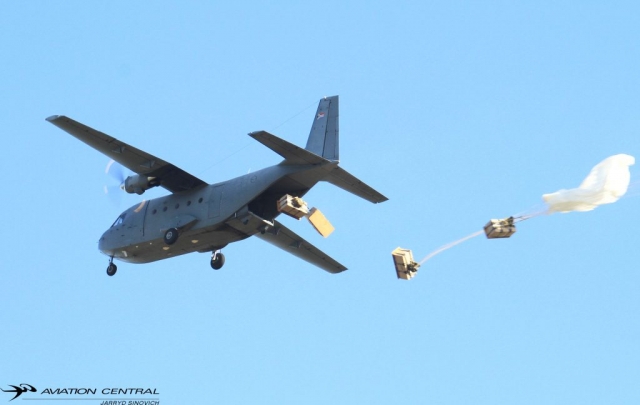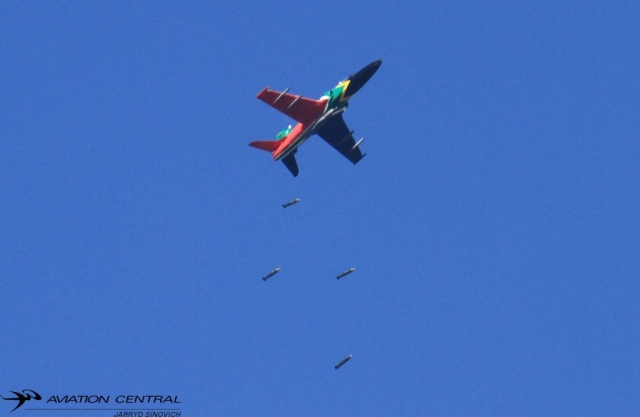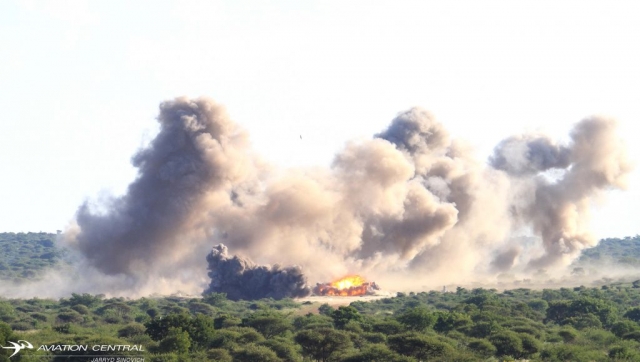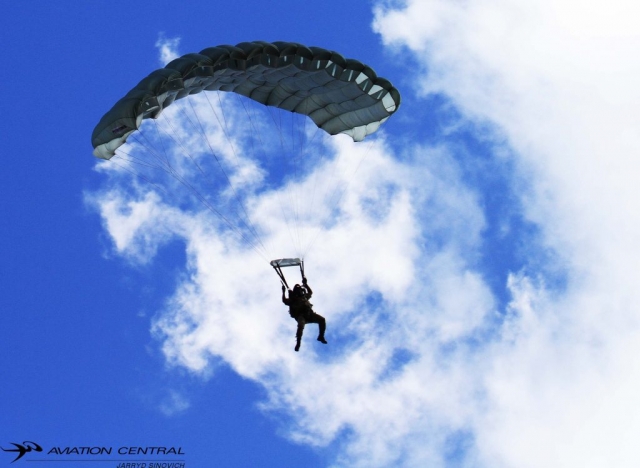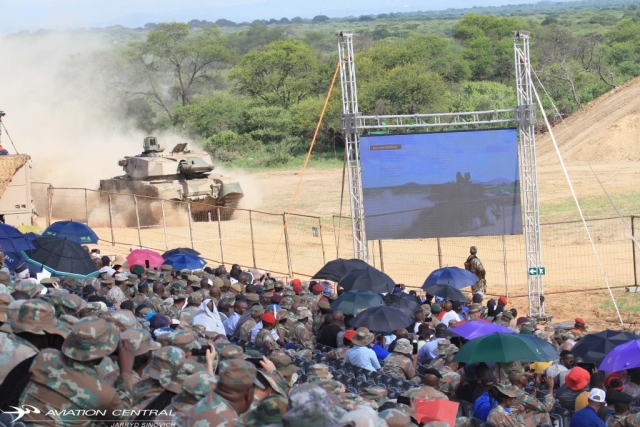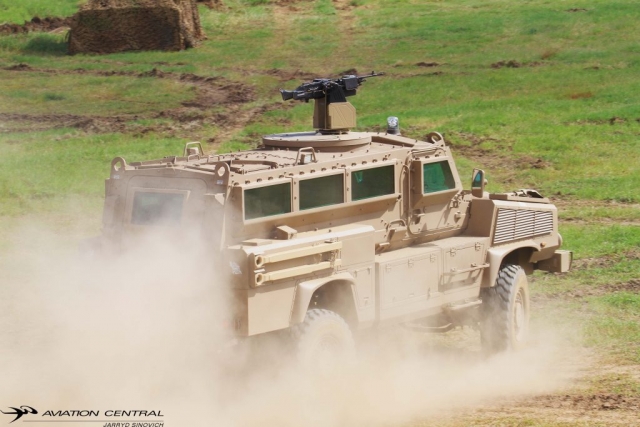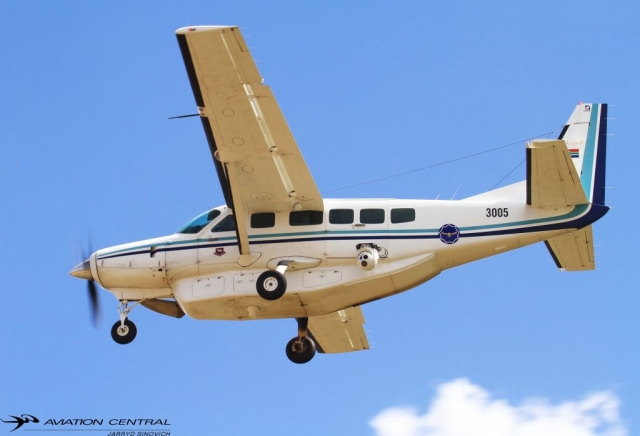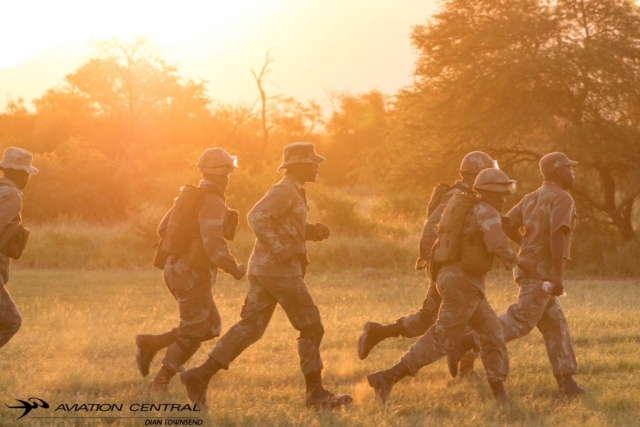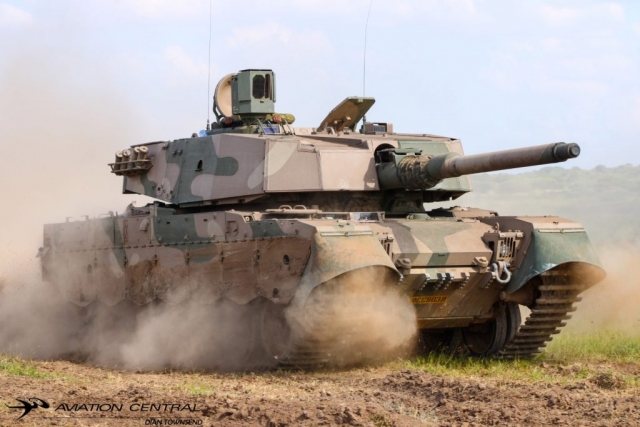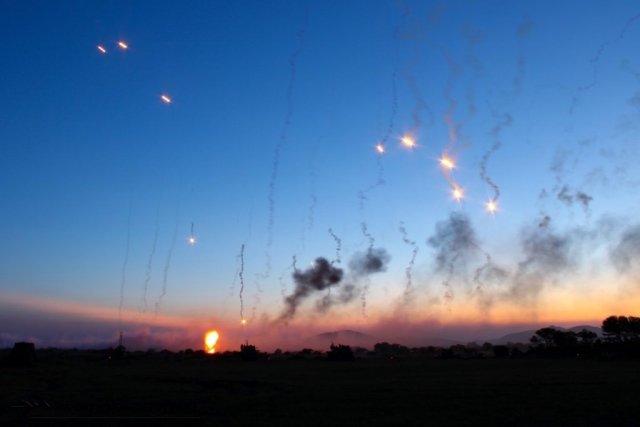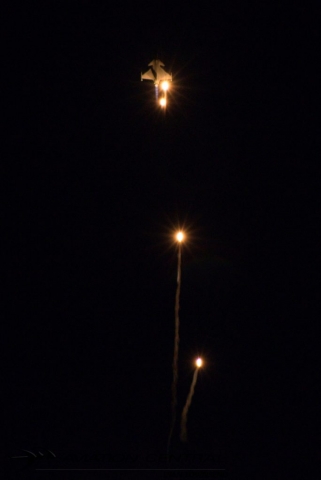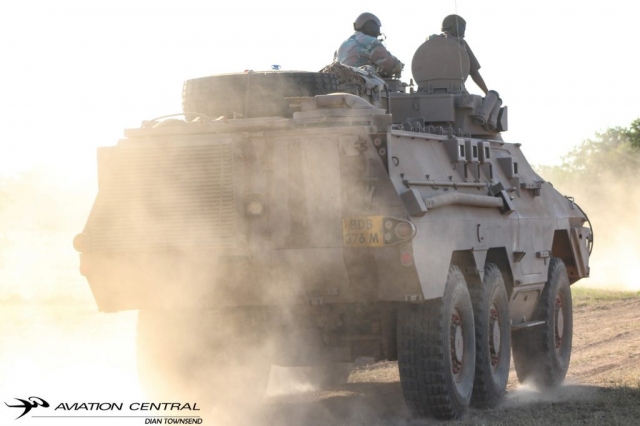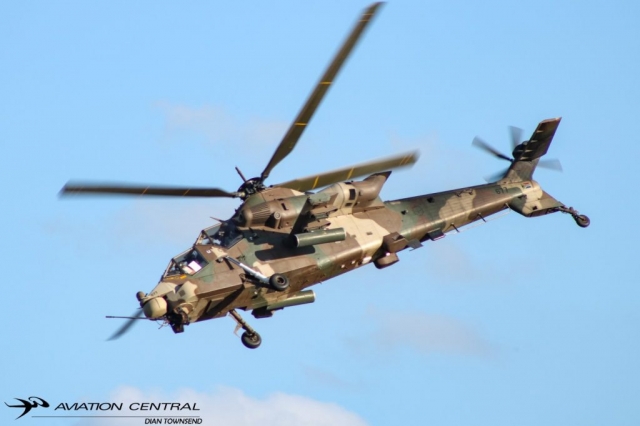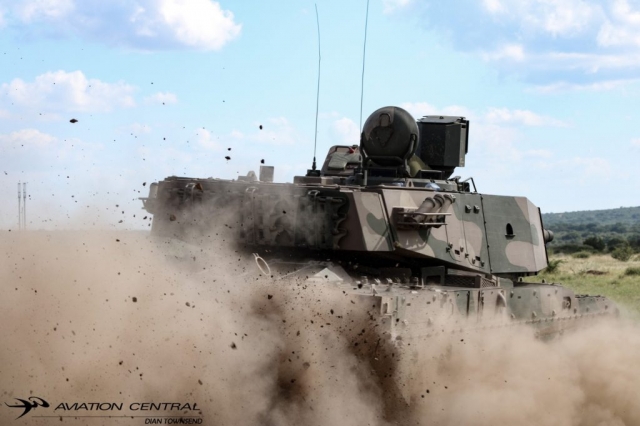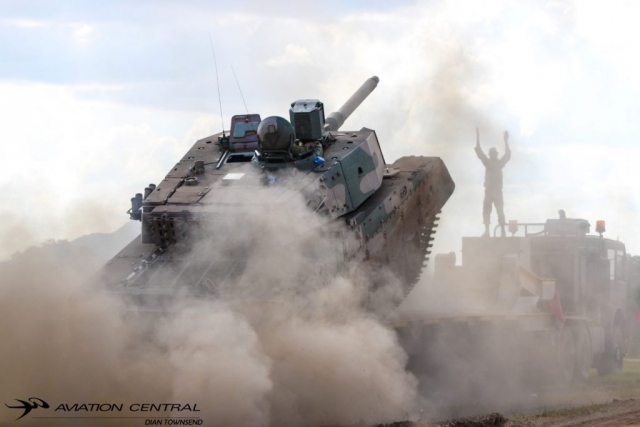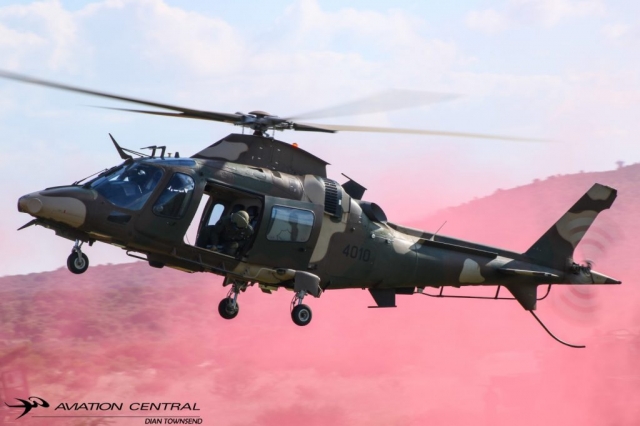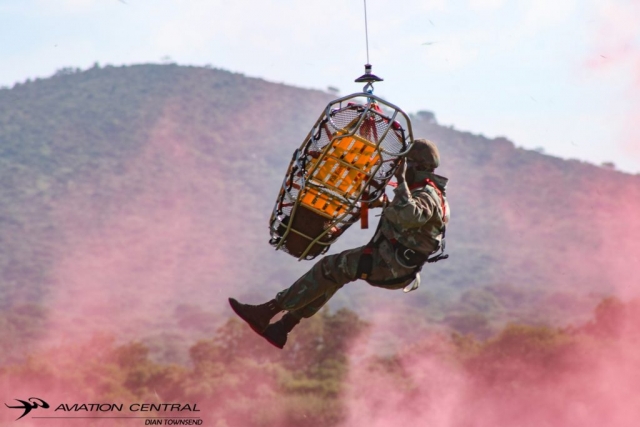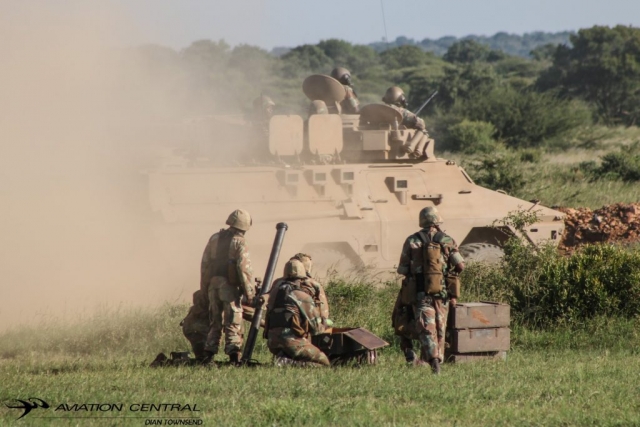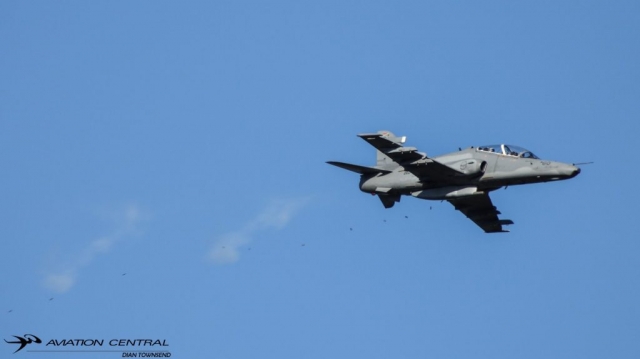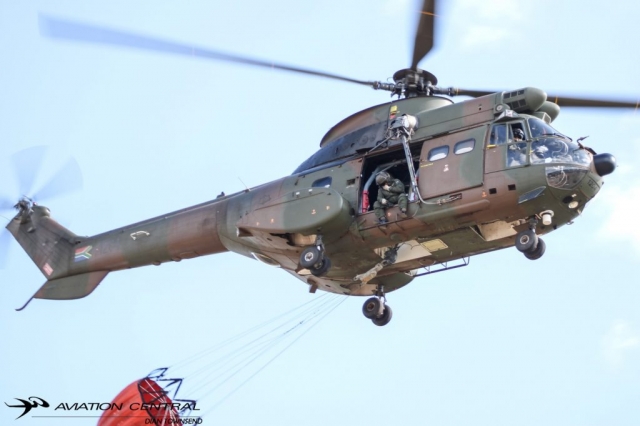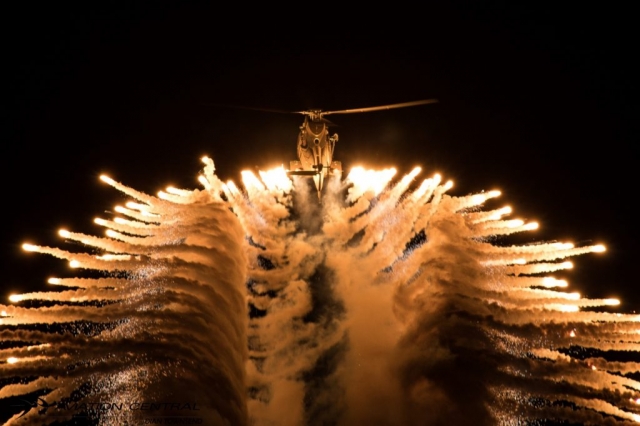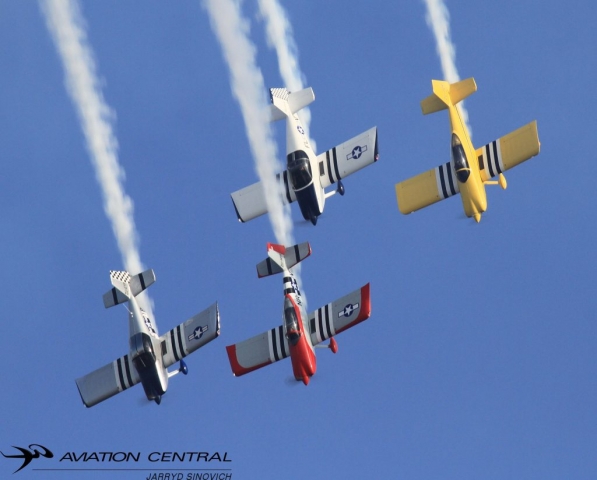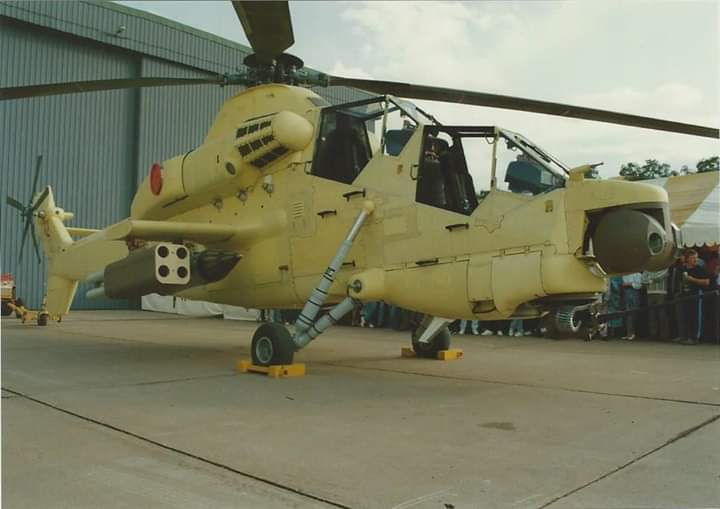Monthly Archives: February 2020
Address by Commander-In-Chief, President Cyril Ramaphosa on the occasion of Armed Forces Day, Polokwane, Limpopo
Minister of Defence and Military Veterans, Ms Nosiviwe Mapisa-Nqakula,
Premier of Limpopo Province, Mr Stanley Mathabatha,
Ministers of Defence from fraternal countries,
Ministers and Deputy Ministers,
MECs,
Mayor of Polokwane and Councillors,
Secretary for Defence, Dr Sam Gulube,
Chief of the South African National Defence Force, General Solly Shoke,
Members of the Military Command Council,
Generals, Admirals, Officers and Officials,
Non-Commissioned Officers,
Members of the Diplomatic Corps,
Soldiers on Parade,
Military Veterans,
Distinguished Guests,
Fellow South Africans,
As the Commander-in-Chief of the South African National Defence Force, it is my privilege to be here today to honour our women and men in uniform.
Armed Forces Day is commemorated annually to pay tribute to the soldiers who perished in the English Channel in 1917 on board the SS Mendi during the First World War.
We honour the women and men who protect our borders, and those who have gone before who made the ultimate sacrifice in defence of our nation.
We are proud of the progress we have made in ensuring that from the disparate apartheid-era armed forces a single, united, uniquely South African National Defence Force has emerged.
The SANDF is an enduring symbol of our rainbow nation, and includes in its ranks black and white, men and women.
Through loyalty and discipline, in defending our territorial integrity and sovereignty, though your involvement in conflict resolution and peacemaking efforts on the continent, and through your heroic roles during natural disasters both at home and in our neighboring countries, the SANDF indeed makes us proud to be South African.
Only ten days ago, we commemorated the 30th anniversary of the release of the SANDF’s first Commander-in-Chief, President Nelson Rolihlahla Mandela.
We should not forget that historic day, which dramatically changed our country’s political trajectory and led to the peaceful transition to democracy and which brought the SANDF into existence.
We mark Armed Forces Day this year at a time when South Africa has assumed the chairship of the African Union for 2020.
This is a great responsibility to lead our continent towards the peace, unity and prosperity envisaged many years ago by our forebears like Kwame Nkrumah, Julius Nyerere, Patrice Lumumba, Albert Luthuli, Oliver Tambo, Thomas Sankara and Kenneth Kaunda.
In May this year, South Africa will host the Extra-Ordinary Summit of the AU on ‘Silencing the Guns’, one of the pillars of the AU’s Agenda 2063.
This Summit will provide an opportunity to assess the implementation of the AU Master Roadmap, and at the same time respond to emerging developments on the African peace and security landscape.
As a continent, we have set milestones towards the attainment of a better and safer continent for all Africans, but our progress remains mixed.
Conflict continues in several African countries, undermining our collective efforts to achieve peace and security.
South Africa looks to the SANDF to assist us to meet our obligations with regards to supporting continental peace and security.
On this 2020 Armed Forces Day, we remember all the heroes and heroines in the SANDF who serve us without any expectation of reward, and who put their lives on the line to serve their country and their continent.
In our quest to Silence the Guns, we acknowledge the enduring challenges of armed conflict in Mali, Burkina Faso and Niger, in North Africa, in the Sahel, in the Horn of Africa and in the Great Lakes region.
We count on the SANDF as an organ mandated by the AU and the UN respectively to discharge the important responsibility of promoting peace.
I commend our soldiers for staying true to this cause despite the many challenges they face.
On this Armed Forces Day, we show appreciation for the service rendered by our soldiers, who despite limited numbers, ensure that the 4,800 kilometres of our vast border is patrolled.
The companies deployed along the South Africa border with Zimbabwe, Botswana and Mozambique continue to make great strides in curtailing illegal actions in their areas of responsibility.
These men and women do remarkable work in safeguarding our borders and in assisting the South African Police Service with crime prevention.
We commend them, knowing that the vast stretch of our border requires far more resources on the ground.
As a nation, we owe a great debt of appreciation to our National Defence Force for being not just a fighting force, but a developmental force.
Across our country, we have seen the SANDF render essential services through the deployment of health professionals at public health facilities that are in crisis.
We have seen our men and women in uniform repair sewage infrastructure along the Vaal River and in the North West.
Our forces have built bridges in rural areas to give isolated communities access to places and services they would not be able to reach otherwise.
And our forces are active in fire-fighting as well as mountain and maritime search-and-rescue operations.
In undertaking these diverse programmes, the South African National Defence Force draws on the talents and energy of young South Africans.
The Military Skills Development System is an important front in our nation’s battle against youth unemployment.
I am therefore pleased that the programme for the 2020 Armed Forces Day included a military careers showcase.
I hope that young people who wish to develop themselves and grow South Africa will embrace these opportunities through which they will make an important contribution to the security and sustainability of our nation.
We recognise that we have come a long way in the past 25 years.
We have to continue growing our defence industry, especially as it makes a significant contribution in the country’s economy.
To strengthen the relationship between the defence industry and the armed forces, we have launched the National Defence Industry Council.
This development aims to support the defence industry with export opportunities while also meeting the SANDF’s material needs.
We have also launched the Defence Industry Fund, with the objective of growing the local defence industry and servicing the SANDF and external clients.
We are starting to see the fruits of this intervention in our military.
Our Armaments Corporation, Armscor, is also integrally involved in these processes and continues to provide major acquisition and project management capabilities.
South Africans should be proud that their military is providing opportunities to small businesses and contributing to the stimulation of local economies where bases are situated.
This we have done through Project Koba-Tlala.
To this effect, the SANDF has entered into a Memorandum of Understanding with the Department of Small Business Development to raise the department’s spend on small and medium enterprises from 30% to 50%, and create a lifeline for start-ups and budding entrepreneurs.
I challenge you to ensure that women-owned businesses access a significant chunk of this procurement in line with the call by the AU for the allocation of at least 25% of public procurement to women-owned businesses, instead of the current 1%.
Compatriots,
I want to commend Minister Mapisa-Nqakula for establishing the Ministerial Task Team against Sexual Exploitation and Abuse in the military.
The Task Team is currently hard at work to rid our military of incidents of sexual exploitation and abuse, which go against the grain of our military ethos and character, and which violate the very principles on which our democracy is founded.
These are steps in the right direction to address the disgraceful behaviour of a few men and which will give weight to our efforts to end violence against women on our continent.
During our tenure as African Union chair, we will make the adoption of the AU Convention on Violence Against Women a priority, and urge member states to ratify international protocols that outlaw gender discrimination.
The global climate crisis threatens our continent more than most, contributing to resource scarcity and instability.
It has the potential to aggravate security issues.
As Chair of the Committee of African Heads of State and Government on Climate Change, I will ensure that South Africa prioritises mitigation, adaptation and support.
As Commander-in-Chief, I will keenly follow the initiative that the Defence Minister took with the campaign to ‘Plant Trees Not Bombs’ in Durban in November 2019.
The UN Under-Secretary-General, Fabrizio Drummond, was also part of this initiative and urged UN members to plant 75 million trees as part of mitigating climate change, also in commemoration of the 75th anniversary of the founding of the UN.
I urge the SANDF to expand this initiative in partnership with other government entities.
As I conclude, I wish to pay tribute to one of our own, the late Chief of the South African Army, Lt-Gen Thabiso Mokhosi, who we laid to rest in December 2019.
He would have been with us today.
In his memory, let us continue serving this country loyally, and redouble our efforts to ensure that South Africans feel safe and remain safe.
I thank you.
Next Lowveld Airshow only in 2021

MEDIA RELEASE
19 February 2020
Lowveld Air Show postponed to 2021
Dear Media Partner
On Wednesday, 12 February 2020, the Lowveld Air Show committee reached a decision to postpone the 2020 Lowveld Air Show during a special meeting that was held.
Since the 2017 air show, the committee has considered the option of only hosting an air show once every two years. We played with the idea, but continued hosting it each year due to public demand. “The 2019 air show was one of our biggest and most successful air shows ever hosted. The new approach of a shorter air show and other factors that contributed to it being such a great success, made this an incredibly hard decision to make,” Johan Heine, Chairperson of the Lowveld Air Show committee stated. “We understand most of our valued partners, each year, look forward to form part of this very popular Lowveld family event.
However, the economic downturn, financial pressure, and the significant escalation of air show costs, the wise decision was put into effect now, to only host an air show every two years, starting 2021,” Johan continued.
By hosting it bi-annually, it will allow all our partners the opportunity for long term budget planning and possibly bigger and more sponsorships which will enable us to always present an air show on the highest standards everyone has become accustomed to. Johan said they invite all interested corporates and business owners who would like to get involved in the second biggest event hosted in the Lowveld, to contact them, as planning is already underway for next year.
“We would like to make use of this opportunity to thank all our loyal supporters which include sponsors, participants, exhibitors, and most importantly the public who come to enjoy this massive family event every year. We truly value you.”
It will always stay our main priority to bring the world of aviation to the Lowveld community in conjunction with our main aviation partner, Kishugu. Their main purpose is to expose the public and our youth to the many careers in the aviation industry.
We are certainly committed and excited to get planning underway for a bigger and better Lowveld Air Show 2021.
See you next year!
For more information contact: Naranda Leeuwner
Marketing and Media Liaison 072 447 5968
END/
Photos from the 2019 Airshow
Most Powerful Rolls-Royce Business Aviation Engine’s Takes To The Skies For The First Time
Two Rolls-Royce Pearl 700 engines have successfully powered the brand new Gulfstream G700 to the skies for the first time. The purpose-designed engine, the most powerful in the Rolls-Royce business jet propulsion portfolio, is the exclusive powerplant for Gulfstream’s flagship aircraft, the world’s most spacious business jet.
The Gulfstream G700, which used a 30/70 blend of sustainable aviation fuel for this first flight, took off from Gulfstream’s headquarters in Savannah, Georgia, USA, at 1:19 p.m. local time and landed 2 hours and 32 minutes later. The aircraft and its engines will now undergo an intensive flight test programme ahead of certification.
Dr. Dirk Geisinger, Director – Business Aviation, Rolls-Royce, said: “This is a truly great moment for all of us and we are very proud. The cutting-edge Pearl 700 is a perfect fit for the Gulfstream G700 and will help the aircraft deliver an unrivalled combination of ultralong-range, speed and performance. We have already achieved more than 1,500 testing hours and 5,000 cycles, and we are fully committed to supporting the G700 flight test programme.”
With more than 3,200 business jets in service today powered by Rolls-Royce engines, the company is the world’s leading engine supplier in this market. The Pearl 700 is the newest member of the state-of-the-art Pearl engine family, first introduced in 2018, and marks the seventh new civil aerospace engine introduced by Rolls-Royce over the past decade. Gulfstream’s selection of the Pearl 700 to power its new flagship aircraft reaffirms Rolls-Royce’s position as the leading business aviation engine manufacturer. The engine was developed at the Rolls-Royce Centre of Excellence for Business Aviation Engines in Dahlewitz, Germany.
The Pearl 700 combines the Advance2 engine core, the most efficient core available across the business aviation sector, with a brand-new low-pressure system, resulting in an 8 per cent increase in take-off thrust at 18,250lb compared to the BR725 engine. The engine offers a 12 per cent better thrust-to-weight ratio and 5 per cent higher efficiency, while maintaining its class-leading low noise and emissions performance. The result is an engine that is highly efficient, but also able to propel the aircraft nearly as fast as the speed of sound (Mach 0.925).
It brings together innovative technologies derived from the Rolls-Royce Advance2 technology demonstrator programmes with proven features from the Rolls-Royce BR700, today’s leading engine family in business aviation. This includes a highly-efficient 51.8” blisked fan, a high pressure compressor with a market-leading pressure ratio of 24:1 and six blisked stages, an ultra-low emissions combustor, a two-stage shroud-less high pressure turbine and an enhanced four -stage low pressure turbine, that is one of the most efficient and compact in the industry.
The Pearl engine family is part of the Rolls-Royce IntelligentEngine vision of a future where product and service become indistinguishable thanks to advancements in digital capability. As well as a new-generation Engine Health Monitoring System that introduces advanced vibration detection, the family benefits from the incorporation of advanced remote engine diagnostics. It is also enabled for bi-directional communications, allowing for easy remote reconfiguration of engine-monitoring features from the ground. Cloud-based analytics, smart algorithms and Artificial Intelligence continue to play an increasing role in delivering exceptional levels of availability and greater peace of mind for our customers.
22 Squadron to the Rescue-Toitskloof Western cape
Big wall rescue for Base Jumper this past weekend in the Cape. Rescue 37 of 2020 for the Western Cape teams.

A foreigner was critically injured after striking a cliff while BASE jumping in Du Toitskloof near Cape Town.

A small WSAR team of 3 (2 medics and a climber) were deployed with the AMS (Western Cape Government Department of Heath) helicopter just before dark on the 14th. They abseiled 170m to the patient, where a Metro ALS Paramedic stabilised the patient overnight on the cliff face.

At first light on the 15th 21 members of MCSA Mountain Rescue team assembled as part of a greater WSAR team.
A South African Air Force (SAAF) Oryx helicopter from 22 Squadron Airforce Base Ysterplaat inserted a MCSA Technical Rescue Climbing team, who assisted in retrieving the patient, the gear as well as the rest of the team on the cliff face.
After extraction the patient was treated at the landing Zone by doctors and paramedics then flown by AMS Air Ambulance Agusta A119 to Cape Town for further urgent treatment.
On behalf of the MCSA and patient we would like to extend our gratitude to the South African Airforce!

We wish the patient a speedy recovery.Thank you to the MCSA for the upbove detailed wording on the weekends rescue operation!
Virgin Atlantic -to start daily flight service to Cape Town in October 2020
Winter sunseekers can head down to South Africa on our new daily service flying from London Heathrow on a 787-9 aircraft.
The new service launches on 25th October and will complement our existing daily A350 service between London Heathrow and Johannesburg. The VS478 will operate as a night flight departing Heathrow at 16:20 arriving into Cape Town at 05:55 whereas the inbound, the VS479, will depart at 08:00 landing later that day at 18:00. Return Economy fares start from £713 per person.

“2020 is an extremely exciting year of continued growth for Virgin Atlantic,” said our chief commercial officer Juha Jarvinen.
“We’re delighted to be flying to Cape Town again, and we’re expecting a high proportion of leisure travellers on this route, taking advantage of the winter sun, the safaris and of course, the world-famous wine region.”
You can book your place on our service from 18th February 2020, which gives you plenty of time to start planning your next trip.
If you need some inspiration, we’ve rounded up our favourite reasons to visit the Mother City, from the world renowned wine farms of the Constantia region to the challenge of hiking up Table Mountain. We’re already counting down the days.

We look forward to seeing one of Virgin Atlantic Boeing 787s and Airbus A350 airliners touching down at Cape Town International Airport in October!
2 Squadron Gripens to open SONA 2020
The sharp end of the South African Airforce 2 Squadron flying the SAAB JAS39 C and D variants of the Gripen will be opening the State of the Nation Address by the commanding chief South African president Cyril Ramaposa.
Proceedings are set to take place at 19H00 on the evening of 13 February at Palamentary House in Cape Town this coming Thursday.
The Parliament of South Africa is South Africa’s legislature; under the present Constitution of South Africa, the bicameral Parliament comprises a National Assembly and a National Council of Provinces. The current twenty-seventh Parliament was first convened on 22 May 2019
2 Squadron is based at Airforce Base Makhado in the Northern Limpopo Province and led by Officer Commanding of 2 Squadron Lieutenant Colonel Josias “Boerboel” Mashaba.
In previous SONAs the SAAF have played a mighty role in top cover close air support, air policing and flypasts by both Gripen and the Silver Falcons.
First Rooivalk Flight 11th February 1990-30 Years On!
The Denel Rooivalk is an attack helicopter manufactured by Denel Aviation of South Africa. Rooivalk is Afrikaans for “Red Falcon”

The Rooivalk attack helicopter First Flight Rooivalk XDM was 30 years ago on the 11th February 1990,back in the days of the then Atlas Aircraft Coporation now known today as Denel Aeronautics.

Development of the type began in 1984 by Atlas Aircraft Coporation its development is closely connected to the Denel Oryx medium transport helicopter, both aircraft being based on the Aerospatiale SA330 Puma Helicopter and having started development at the same time on both projects.

Development of the Rooivalk was protracted due to the impact of limited budgets during the 1990s, and a desire to produce a highly advanced attack helicopter.

Developing an entirely new helicopter from scratch would have involved designing and developing many accompanying subsystems and components, such as the turboshaft engines and the dynamic systems, such as the main and tail rotor systems and the gearboxes.

Due to the great difficulty posed by the prospects of designing and manufacturing a clean-design helicopter, which would have substantially increased the cost and timescale of the project, it was decided to base the attack helicopter upon an existing design. At the time, the SAAF operated two principal helicopter types – the Alouette III and the SA330 Puma.

The Alouette III was a small helicopter which originated from the 1960s; due to the age of the design and a lack of engine power, it was not considered a favourable candidate for further development work.

The Puma was substantially larger and was equipped with more powerful engines; both factors provided a broader basis for the accommodation of additional equipment and for potential growth.

Another key factor for its selection was the parallel development of a localised and improvement model of the Puma in South Africa, known as the Atlas AS32 Oryx. The Oryx possessed an increased power-to-weight ratio and had improved performance in the high temperature climate that the type was typically being operated in; development of the Oryx was far quicker than what would become the Rooivalk as it was a more straightforward program.
Other potential sources were mooted, such as the use of propulsion elements of the Aerospatiale Daulphin ; the adoption of these components has been speculated to have likely resulted in a smaller and potentially more economic rotorcraft.
Ultimately, it was decided to adopt both the powerplant and dynamic systems of the Oryx—which bore significant similarities to their Puma and now Airbus Helicopters AS332 Super Puma ancestors—as the basis for the planned attack helicopter;
Commonality with the Oryx systems would simplify logistics and reduce maintenance costs. This meant that the attack helicopter would have a significantly large airframe, giving it long range and the capability to carry many sensors and armaments.
During the 1980s, the defence budgets of South Africa were relatively generous, especially in contrast to later decades, thus Denel sought to provide a rotorcraft that would be amongst, even potentially superior to, the best attack helicopters in the world.

The helicopter, later named the Rooivalk, was envisioned as an agile, highly sophisticated gunship, especially suited to the threats of the Angolan conflict and countering vehicles such as the T-55 battle tank.

Three Rooivalk attack helicopters have been deployed with the United Nations to support of the stabilization in the Democratic Republic of Congo in 2013.

There has been more occasions where the Rooivalks have seen action with the support of fire power in the DRC on a number of peace support missions since 2013.

The Rooivalk attack helicopter is based at Airforce Base Bloemspruit in the Central Free state province, flying for 16 Squadron, also home to 87 Helicopter Flying School, flying Agusta A109LUH and Oryx helicopters. The South African Airforce have just under a dozen on strength flying to date.
General Fabian “Zakes” Msimang stated:”The continued operation and future sustainability of the hardest working air assets of the SAAF being the Oryx, Rooivalk and C130, rely on an efficient and effective Original Equipment Manufacturer and Technical Design Authority of the Rotary Wing assets” during the recent Prestige day parade held at AFB Swartkop on January 31.

SAA Brings Miss Universe back home Aboard New A350-900 Aircraft
JOHANNESBURG, 8 February 2020 – South African Airways (SAA) was honoured to bring Miss Universe 2019, Zozibini Tunzi back home aboard its brand new Airbus A350-900 from New York on Saturday.

Her sparkling presence aboard SA204 added excitement on 15-hour journey between New York and OR Tambo International Airport in Johannesburg as customers interacted and took pictures with her.

“SAA is more than an airline, we – as Zozibini – are African first. We are a proud carrier of Africa’s hopes and dreams and its unlimited potential, which leaves us bursting with pride as we welcome our daughter back home and celebrate her global success,” said Zuks Ramasia, SAA’s ACEO.
“Our crew described the opportunity to fly a South African born Miss Universe as one of their proudest and memorable experience, one that will remain an indelible highlight in their careers,” said Ramasia.
SAA flew Zozibini back to South Africa as one of the “Homecoming” partners to showcase pride, patriotism and embrace African heritage.
In December, she flew SAA to Sao Paolo to participate in the Miss Universe contest as arranged by the Miss SA Pageant organisers.
The 25-year-old student hails from Tsolo in the Eastern Cape. She was crowned Miss Universe 2019 after previously being crowned Miss South Africa 2019. She is the third woman from South Africa to win the title, and the first black woman since Leila Lopes was crowned Miss Universe 2011.

SAA will fly the homegrown beauty queen back to New York where she lives during her reign as Miss Universe. On her return trip, she will again travel on the state-of-the-art aircraft, of which SAA has four in its fleet.
Like Zozibini, customers can enjoy the airline’s four A350s superior features such as a quieter cabin and relaxing in-flight experience including the all-new In-flight Entertainment (IFE), extra-legroom seats in Economy Class and lie-flat beds in Business Class.
The aircraft, which is environmentally friendly, with improved fuel-efficiency can fly further than any other aircraft in commercial service.
The introduction of the A350s will contribute to SAA’s operational efficiencies and cost reduction, and forms part of the ongoing fleet renewal programme. For example, through the A350s, we will lower our operational costs, and save on our fuel consumption by 25% and also lower our maintenance costs by 40% over a five-year period





















